Brief Overview
Email is as useful and well functioning digital marketing tool as it ever was. Globally over 4 billion people use email, and the email is estimated to generate $44 for every $1 spent in the same way when compared with £1 spent on direct mail.
Email marketing enables the kind of dialogue development that can be found only in real-life dialogues with customers. Customization and personalization play major roles here. Marketers could function more like friends who provide help and useful information to their audience whenever it is needed by them.
In contrast to previous marketing strategies in which communication was sent out in bulk emails lends itself well to automation and personalization. Marketers may cause behavioral trigger emails when users undertake some action or have not been active for a predetermined time span based on the predefined criteria.
Key Takeaways
- Definition
- Purpose
- Methodology
- Variables to Test
- Metrics
- Iterative Process
- Data-Driven Decision Making
- Continuous Improvement
Using dynamic content and personalized subject lines would not only help you to get the high open and clickthrough rates but also, you would get more clicks from the email newsletters.
Integrations, for instance, with social media like twitter and facebook landing pages and CRM email marketing result in more effective and results-driven email campaigns that focus on the specific audience. Marketers can segment and keep their sight on the overall performance more precisely now.
The emergence of new email formats like the interactive content, dynamic videos, and augmented reality allows users to better interact with emails as compared to plain text or pictures and make the email experience more interesting.
Essentially, email marketing remains as one of the most critical techniques of digital marketing strategies in the present times and years to come. Addressability, measurability, automation and innovation inherently entailed email them will only continue to boost its portrayal of value alongside emerging ones. Addressing the question of relevance, insightful content, and user experience as the main ones build the email success.
Also Read:- 10 Effective Strategies Digital Marketing for Business Brokers [2024]
A/B testing in the context of email marketing
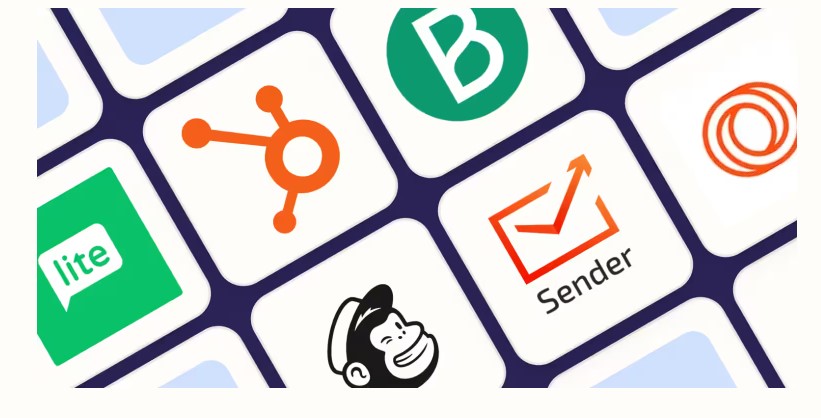
A/B testing or split testing is the method for selection of the better version of an email which mostly leads to high response rates in email campaigns.
Our test is to divide the subscribers into two groups and send them two versions of an email mail-out, which with each variant we will measure how many people read the letter (open rates), how many clicked (click rates), converted (conversion rates) and other parameters between Variant A and Variant B.
The main elements that may be confirmed through A/B testing are:
- Subject line
- Preview-text
- Email content
- Calls-to-action (CAC)
- Images
- Send time
With the A/B testing of different versions against each other, e-marketers will be able to see which one is more effective to resonate with the clients and achieve more conversions. With this, they can optimize future e-marketing campaigns.
The fact of the matter is email marketers ought to consider A/B testing when they see declining rates of openings and click throughs rate. The escalation of inbox saturation and the need to shift to mobile dictates that marketers use data points that can be measured, for their emails to stand out from the rest.
Usually, running a split test while making modifications in the email process will generate the insight required to improve email metrics with time.
Basic process for running an A/B test for email campaigns
Lets discuss the process for running an A/B test for email campaigns:
- Make two identical emails – The only difference between them – There should be nothing but this one variation that you want to test in the emails. The following details might be replaced here- subject line, preview text, call-to-action, imagery, copy, etc. Make sure the rest of the email is identical to the content and design.
- Send to segmented list – List segmentation is a great way to split and send copy A to half of your subscribers and copy B to the other half. Random intake is desirable in such cases, so that the experiment can present impartial data.
- Analyze the performance – Run the analysis for long enough, and then look at performance metrics to determine if it meets the desired specifications. Put forward the open rates, click rates, conversion rates, revenue, etc. of Version A below the version B to analyze.
- Find the winner – According to their pie-chart performance, the top version is chosen. The form in which the successful alternative has been approached needs to be conveyed to the rest of your mailing list as well.
Things you can A/B test with emails
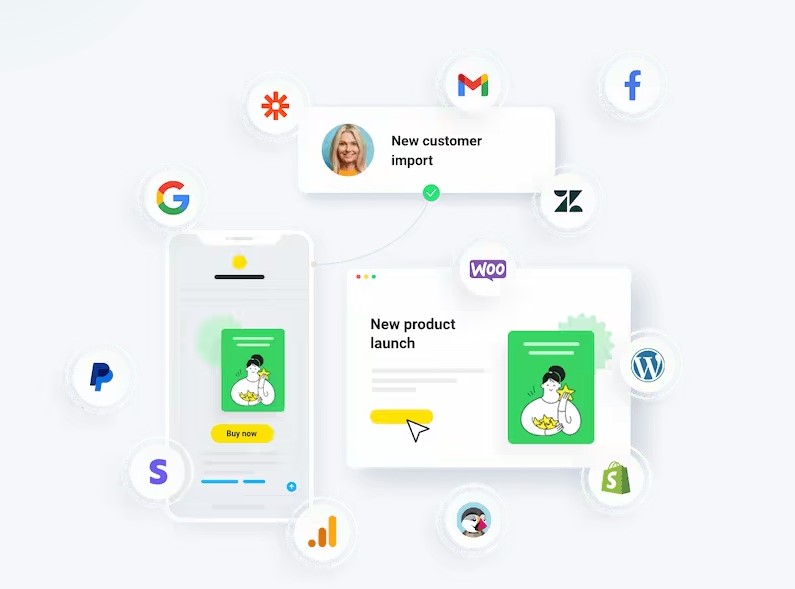
Some of the most common are:
- Subject Lines – Survey shows that the very subject line is that which captures first subscribers’ attention and makes a huge difference to open rates. Utilize different subject line testing strategies such as the length, the nature, the urgency, the cause of such etc.
- Preview Text – Before a person opens an email, they can always see its subject line and a brief preview text of the message that follows. Experiment with the different sneak peak to achieve higher open rates.
- CTAs -Tweaking your CTA as often as you can do doubly or triple your click-through and conversion rates. Test the wording, placement, colors, size, or whatever else that might need changes.
- Email Content – It would help to try different email content such as a topic, length, images, etc., and see if the engagement of readers can be improved.
- Offers or Promotions – If the offer in your email is a special deal, discount, expiration date, etc., then test them to find which one works better.
- Pictures – Put them as a narration and even add test include vs. excluding images altogether. Examine your emails not only according to their appearance but also whether they render fast.
- Send Times — You may see that only particular days, at specific time of the day, receive way more conversions than others when you test your A/B tests. Do a test run with this to see better email timings for future email schedule.
Discussion on why A/B testing is crucial for email marketing success
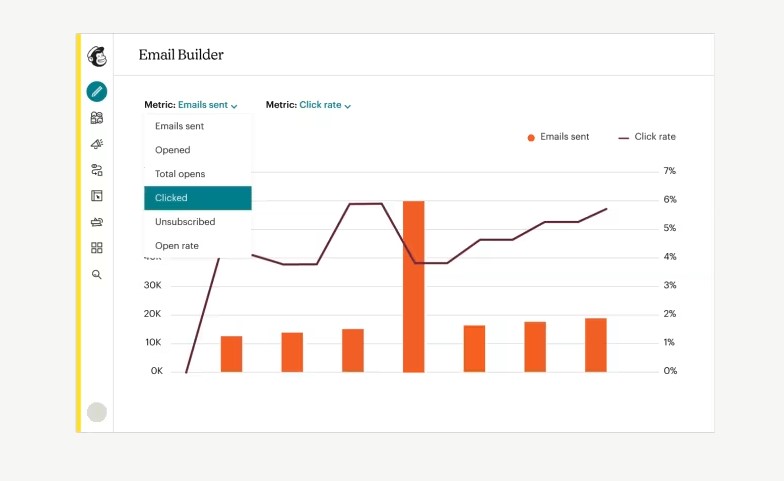
Lets discuss why A/B testing is crucial for email marketing success:
- Determine your most productive subject lines
- Boost click-through rates
- Convert leading email relevancy
- Make future campaign development more successful
Determine your most productive subject lines
- The success of your email depends on open rates, and the subject line is the first impression your email makes. A/B testing the effectiveness of subject lines helps you figure out which version of a phrase catches people’s eyes and encourages them to open and read your email.
Boost click-through rates
- Following may be applicable: comparing different versions by using design elements, headings, buttons and text enhance the open rate, website visits, sales or other desired action. A tiny adjustment often end up in a boost of the click.
Convert leading email relevancy
- The content variations after a test may indicate what your audience cares about most. Not only is your fund raising activity going to be fruitful, but also you would have a higher quality relationships with donors.
Make future campaign development more successful
- Each A/B study gives you practical knowledge of the target group’s liking. They are helpful for your decision-making process of other email campaign in the future to optimize the click-through rate gradually.
On the whole, A/B testing takes randomness out of the equation and provides an information-based approach that assists you to discover what links an email campaign really.
Although the small outstanding, yet powerful efforts in split testing are initially not rewarding, they eventually result in the improvement, effectiveness and relevance of your email activity. It surely does this, eventually reaching up to the central purpose of the business which may be growth, promotion or making sales.
The Importance of A/B Testing
Here are the Importance of A/B Testing:
- Optimizing conversion rates with a/b tests
- Data-driven decisions
- Enhanced user experience
- Efficient use of resources
Optimizing conversion rates with a/b tests
The binomial test allows you to probe several areas that can improve the rates of the desired actions, for example, signups, purchasing etc. Through exploration of the variations of changes you can tell what is causing an improvement in conversion rates.
Data-driven decisions
A/B testing eliminates the need for any wild guess that the decision maker might have. There is no need to trust suspicions and guesses, you can monitor what drives the audience by using user data to make such decisions. In this way, the results of experiments will determine their decisions.
Enhanced user experience
Beta testing will serve you effectively by uncovering enhancements from the users’ side. It is possible for you to try small changes such as anonymous copy modifies or layouts adjustments and image optimization and look how it affects engagement and satisfaction.
Efficient use of resources
Through small tests, you could determine that the changes you are contemplating were not the optimal ones for the organization before wasting valuable time and money on their full launches. You can perform a test run of multiple versions with a small group of random users and then move on to roll out the changes to a wider audience.
To shorten, testing through A/B serves as a data-driven engine for improving usability and as a means to achieve practice-based solution. The intelligence and follow up consultation it provides lets us make sound and resourcefully sensible decisions when making improvements and iterations to digital experiences. Enforcing a test focused culture sets the order and lets users feedback to the products under development.
Here are some key components of A/B testing
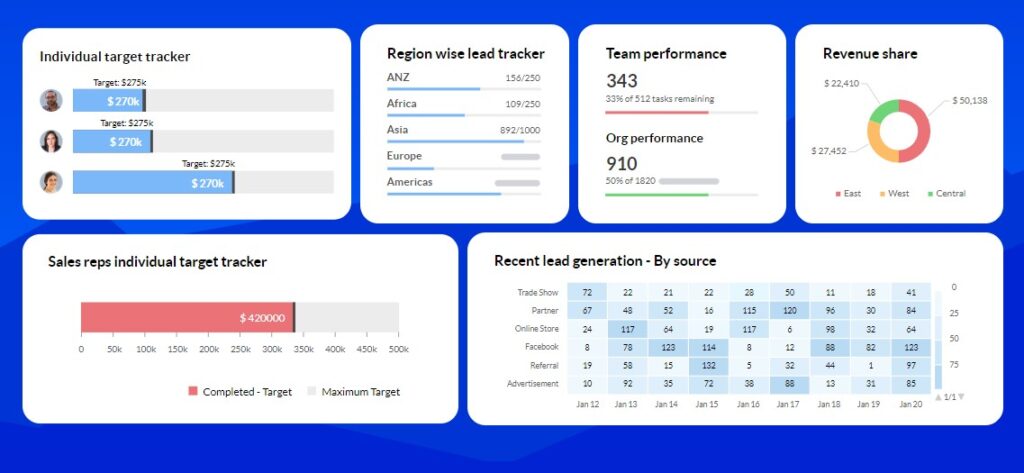
Lets discuss some key components of A/B testing:
- Hypothesis
- Metrics
- Replacements
- Splitting of Traffic
- Duration of the Test
- Statistical Significance
- Impact Analysis
Now let deep dive one by one:-
Hypothesis
Put a hypothesis on which you want to test. Be specific, for example, you could test how design changes or features affect the users to purchase or at least click.
Metrics
decide on the main performance indicators that you will use, like the click-through rate, conversion rate, average order value etc.. Based on this information you will be able to evaluate the impact of a test.
Replacements
Create a and b. The A version is a modifier and corresponds to the original or control. For the B variant, you submit changes that you think will lead to an increased number.
Splitting of Traffic
Allocate on what amount of site traffic to direct to A or to B. For most sites a 50/50 split would be ideal. Ensure that only enough traffic gets through during the tests to reach a meaningful amount of sample size.
Duration of the Test
Most likely after a period of time enough evidence will be collected to determine if the difference between A and B is a result of a constant pattern or just a random chance. Period of time for the accommodations are usually within the 1-4 weeks range.
Statistical Significance
Apply statistical analysis to check whether the observed difference in metrics of A and B is not only by chance, but mainly due to the difference itself.
Impact Analysis
Evaluate the size of the impact: raw budget dollars, annual housing supply, headcount, and TLV. Evaluate the impact of the change and weigh this against the need for the change.
Trial
If the test turns out to be successful up to 100% of traffic migrate to version B. Continue monitoring metrics.
Best practices for A/B testing in email marketing
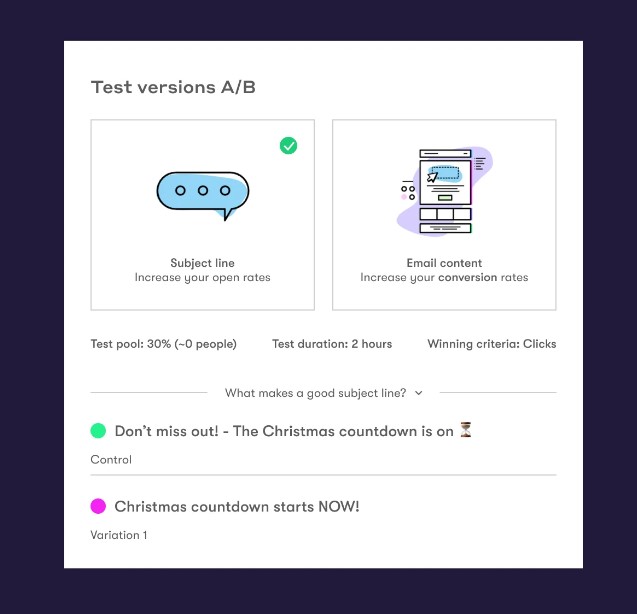
Try and work out what is working and what isn’t, on a step-by-step basis. Make sure that the only change is in the version A or B so that you can 99.9 % understand the impact the specific modification is causing. Impose those tests e. g. try out different subject lines, calls to action, images and so on.
Make meaningful changes
Instead of only slight changes, try switching color and font size. Try to work out tweaks that are capable of affecting rates or CTRs. Prioritize revisions that have something to do with the goal.
Test frequently
Calculate the A/B testing seasons, for example, monthly or weekly new email versions. By running more trials you are always one step closer to betterment.
Use relevant metrics
Understand open rate, click-through rate, conversion rate, revenue per email, etc. Select approaches that are relevant to the goals of your email and business.
Rotate subject lines
Continue to utilize those subject lines that perform better than the others, but test new subjects on a regular basis. Subject line performance is the primary driver of list engagement. It can fluctuate over time.
Post with optimal timing
Listen to the days and time that generate the highest open and engagement rates, then schedule a post around these times. Run your A/B tests for the times that you normally experience productivity spikes.
Test your secondary and tertiary groups
There are certain email versions of a single segment that might be tuned very distinctly for that segment. Ensure, that the testing is done of the segments as: new customers and existent customers, different demographics, geographical regions and so on.
If they have to take a test, let them take it. Keep your tests running for as long as you have planned regarding each test and then select a winner before making any changes. Don’t end tests early.
real-world examples and case studies of A/B testing in email marketing
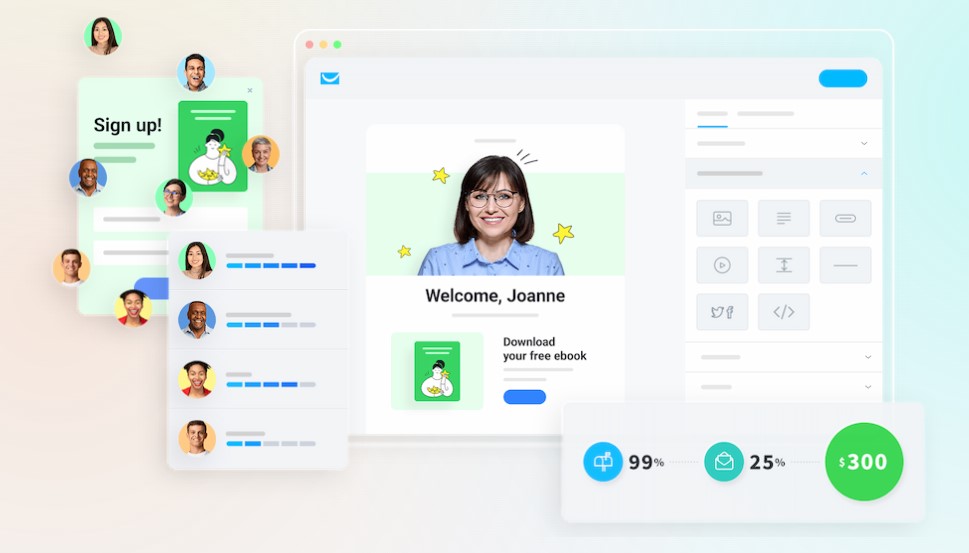
Here are few real-world examples and case studies of A/B testing in email marketing:
Subject Line Testing
- HubSpot made two subject line versions for the same mailing campaign, where the first version said “Free eBook,” and the other version just hinted a bit more about the value of the eBook. With Version A “Free Website Builder”, the [30.3%] open rate was higher than Version B “Have You Built Your Free Website Yet?” which resulted in [33.3%] open rate. The Version B was 10% better due the the change of subject line wording which was done.
Sender Name Personalization
- AppSumo had a split-test of branded sender names, such as Mink vs. “Noah from AppSumo”. They personalize email parameters by 15% in unique open rates and by 6.5% in unique clicks.
Day/Time Optimization
- Mailchimp, together with a client engaged in e-commerce, found out that by switching email delivery dates and time they were not reaching their customers. Messages sent on a Wednesday at 11 am did it an 8.1% better than those sent on a Sunday at 8 pm which were at only 5.2% . Creating an offer that was valid only for a limited period of time increased conversions by no less than 55% for our client.
Content Persuasiveness
- The university tested two different emails about the campaign of fundraising beforehand. Advertisement email that featured words like scarcity and urgency, while the second one drew attention to the university’s effect and accomplishments. The scarcity version shot up the number of donations by 32%.
Call-to-Action Wording
- Spotify was trying alternative button text, with different call-to-action phrases. They did an A/B test between “Get 3 months free” and “See plans” and it turned out that “Get 3 months free” delivered more than 40% clicks. This not only resulted in a boost of conversions to paid plans at the end of the trial period, but helped us create a steady pipeline of revenue for our business.
The highlight for the marketers advancing their optimization mindset and regularly testing the email campaigns. Their variations include content, timing factors, design changes and more. It is not necessary to make large changes; simply small ones can lead to substantial appreciation.
General tips for streamlining A/B testing
First, it is better to base testing hypotheses on goals that are companywide and where even a possible change will result in potential improvements. This provides you with the basis for checking that your ideas are for relevant purposes and for real impact.
Take a custom approach of qualitative user research and analytics review in order to have guidance on what alterations could overcome the limitations. This has been found to give more edge than bet and strike blindly.
Take advantage of power analysis features to ascertain the smallest sample size needed to discern the said improvement with a meaningful difference at a desired confidence level. It eliminates needless testing thus helping to avoid situations where tests do not yield a specific answer.
Leveraging segmentation and multi-variate testing strategies to personalize experiences and target high conversion opportunities at once. It can make learnings faster and push the learners to set their targets faster.
Build testing scripts and decks for standard scenes like signup, landing page, etc. Use a uniform script for repeating things like signups in order to cut down the time of setup.
Provide automated testing platform to support low-effort test creation by utilizing testing tools wherever applicable.
Review outcomes regularly so that you can remove failing tests early and can invest the funds into more fruitful approaches.
The main aim is about being effective by getting the most out of the period of enhancement. I can also enhance on your testing methodology or reorganize a certain process if you have any specific area (parts of the system) that needs improvement or want to automate. In case you have other questions, please always feel free to ask.
Conclusion
Through A/B testing marketers gain an opportunity to improve email campaigns with the help of testing different subject lines, content, design, calls-to-action and stuff. Printing two versions and comparing the results of who has opened emails, how many people clicked on the material makes it possible to identify the best version. This way, each new testing and updating of the web platform brings more visitors, customers, and money. A/B testing emails is the perfect way to make your campaigns successful via learning by doing.




